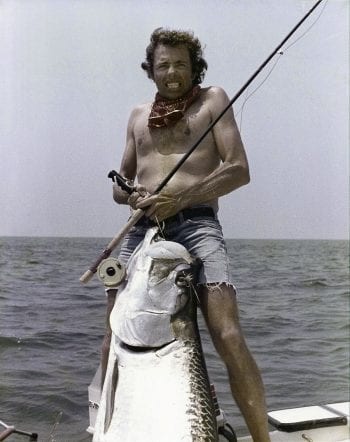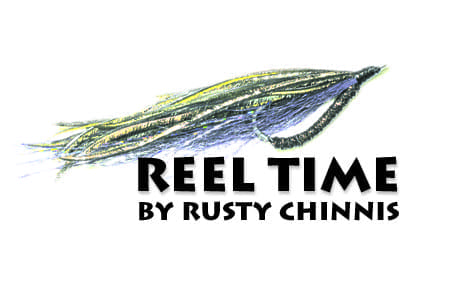Many of us take the tackle we fish with for granted, but it wasn’t long ago that anglers didn’t have the choices we have today. In the early days of saltwater fly fishing, there were no pre-made rods available, anglers had wrapping machines and would build their own rods from blanks made by US Fiberglass. Lefty Kreh and Flip Pallot remember how they would take a blank, wrap the guides, glue the individual cork rings, turn and sand them on lathes and head to the street to try them out. It was a common practice to make a few casts, find the rod too whippy or a guide that trapped line, and immediately break them apart and rebuild them. By constantly experimenting with different guides, blanks, and other components, they essentially advanced the technology of rod building. Many of the spin and plug casting rods they also built gave them ideas that they incorporated into fly rods. Companies like Shakespeare and Fenwick were aware of these pioneering anglers, who competed for 12 months of the year and had representatives like Ben Hardesty work closely with them, making the new innovations in rod design available to a larger angling public.

Fly reels were also very basic and required constant refinements to handle the rigors of the salt. The Pflueger Medalist, Taurus, Hardy, Zenith and Rogue reels of the day required anglers to modify the inadequate drags and spools to fight and land the big fish they encountered. Some had metal drags (Rogue), while others used clickers (Hardy) and had drag adjustments in the handles (Taurus and Rogue). One of the solutions they discovered was to use greases with different viscosities on the center post of a reel in order to defeat the friction and subsequent heat developed when fighting big fish. Never Seize, used on the shafts of a ship’s propeller, was one of the products Kreh remembers using. Pallot recalls the automotive product STP having the perfect viscosity, with the addition of a few drops of gasoline. Time and time again it would be an angler from one of the fly clubs (fishing for a MET record) that would come up with an innovation that would advance the sport. One of the fishermen’s favorite gathering places, where many of the new ideas were discussed, was Mel Shapiro’s fly shop on Bird Road in South Miami.
Fly lines of the day had advanced from the days when they were spun by hand from horsehair in a Cortland factory. The invention of nylon created stronger tapered lines that were coated with PVC. By 1954, Leon Martuch (Scientific Anglers) had patented a device to vary the coating on level fly line cores and followed with the addition of micro-balloons in the early 60s which allowed the line to float.
A big problem for fly anglers was finding a fly line to match to their rods and reels. At the time, lines were not standardized. Fly anglers had to own many different lines for the various species they targeted. Cortland, Shakespeare, and Sunset all made lines the anglers used but in those days, there was no rhyme or reason to the weights and tapers. Myron Gregory, a leading tournament fly caster from San Francisco, was responsible for suggesting a standardized system. He recommended using numbers to determine line size instead of the confusing line lettering system that was in use at the time. Lefty remembers the long passionate letters Gregory would write to him, Pallot, Ted Trueblood, Al McLane and others, extolling the virtues of a line system. He also marshaled the outdoor writers of the time to pressure the line and rod manufacturers to adopt the system. Gregory was a true pioneer and one of the first anglers Lefty remembers who used a shooting head. At the time, fly anglers could never just take a fly line from the package and fish with it. Every line available had to be modified to the particular use for which it was intended. Anglers would make the heads and tapers longer or shorter, and splice in different size running lines. Pallot remembers that at the time, all running lines, despite the fly line size, were standardized. In order to create the line he preferred, he would splice a product called “Amnesia” to the line. At that time all monofilament line, according to Lefty, was as kinky as a coil spring. “Amnesia,” which had less memory, could be stretched and straightened into an effective running line.
In the early 60s, Pallot and his friends would fish for tarpon off the bridges in the Keys. In those days, as today, the fish would lie in the shadow lines and wait for food to be swept to them by the tide. The big difference was that it wasn’t uncommon for tarpon to swim 20 feet to inhale one of the “chicken feather” creations the anglers cast. Because they lost so many fly lines to the bridge fenders, Pallot and his angling buddies would create their own lines. They would stretch 500-pound monofilament line beside a G2AF fly line and sand in the taper with Emory cloth. At the time they didn’t realize that it was the weight of the line as well as the taper that really mattered. As always, they innovated with the materials they had on hand.
While technology played a big role in the advancement of fly tackle and techniques from the 1950s to the present, it was the often-unheralded competitive anglers that spurred the creation of the tackle we enjoy today. Modern saltwater fly anglers owe a debt of gratitude to Kreh, Pallot and the men and women who continue to add to our collective knowledge. The next time you make a successful cast to a school of tarpon you’ll have a new appreciation for the line that effortlessly unrolls into the twenty-knot wind, the silky smooth drag and the bend of the rod as the line rooster-tails to the horizon.
More Reel Time:
Reel Time: Innovators – The architects of modern saltwater fly tackle
































